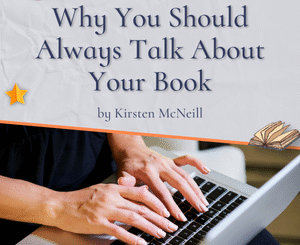Authenticity by Faith Van Horne
 I am happy to welcome Faith Van Horne back for another month with us! In today’s article Faith discusses authenticity and it’s importance for both writers and authors. Enjoy!
I am happy to welcome Faith Van Horne back for another month with us! In today’s article Faith discusses authenticity and it’s importance for both writers and authors. Enjoy!
***
When a piece of fiction moves me, it’s because the author has written it so that it takes on shape beyond the mechanical movement of cogs in a developing plot. This might be in the form of a character whose response to struggle hits me as poignant, real. It might be the story’s setting, described in such lushness that I feel I am there. (Daniel Pinkwater is especially skilled at this when he writes about Chicago, or any of his fictional cities based on it.) Regardless of which parts of the story stand out, they have one thing in common. They feel authentic. I believe them.
In my writing, I find artifice a great temptation. I may feel that the story “needs” to go a certain way, so I attempt to jam my characters in that direction. But when the actions they need to take are not in keeping with who they are, readers are going to notice. They might not even know why, but something will just feel “off.” More often, I’m tempted to write away from strong emotional reactions. Tone down drama. Keep characters from fully experiencing what’s just happened, and have them react in a bland, false manner. While storytellers deal in fiction, showing truth is vital.
In karate, we practice partner drills. These are prearranged sequences of movement, performed so that the karateka have a chance to work on realistic attacks and defenses in a controlled, safe environment. Effective practice runs a fine line. How does one maintain the authenticity of an attack, while at the same time not seriously injuring his or her partner? How do we show the truth behind the necessary fiction?
One thing we stress in class is throwing a real attack, but a controlled attack. This means aiming properly for the target, putting power behind the technique, but stopping just before the point of injury. Many beginning karateka struggle with this. They’ll throw a technique toward the head. But instead of aiming for the target with control, they’ll veer off to one side. The effect is that the defender can simply stand there without taking any action, and the punch will stop six inches short of their face, or off to the side, where it could never hit them. The defender has no response because one isn’t needed. The attack isn’t authentic. When the attack is realistic, the defender must protect him or herself. Otherwise, while they won’t be grievously injured, they will feel the contact. They’ll see the truth of the attack, and know how they need to respond.
I like the idea of hitting readers with a “true attack” in my writing. What does that mean? First of all, practice. Writing a lot, reading a lot, and working on technique, so I know what a true emotional response looks like, then working to craft that truth in my own character. Not shying away from the central point of conflict the way a nervous student shies away from actual hitting a target. Putting my all into it. Learning how, and allowing myself, to write authentically.
How have you learned to improve authenticity in your own writing?
***
 Faith Van Horne is the author of the young adult fantasy novel Slideways. Her collection of offbeat horror stories, Super Sargasso, is now available. She is currently working on another novel. In her free time, she practices karate, and even helps teach it a little. She also blogs at Scribatious (faithvanhorne.
Faith Van Horne is the author of the young adult fantasy novel Slideways. Her collection of offbeat horror stories, Super Sargasso, is now available. She is currently working on another novel. In her free time, she practices karate, and even helps teach it a little. She also blogs at Scribatious (faithvanhorne.






